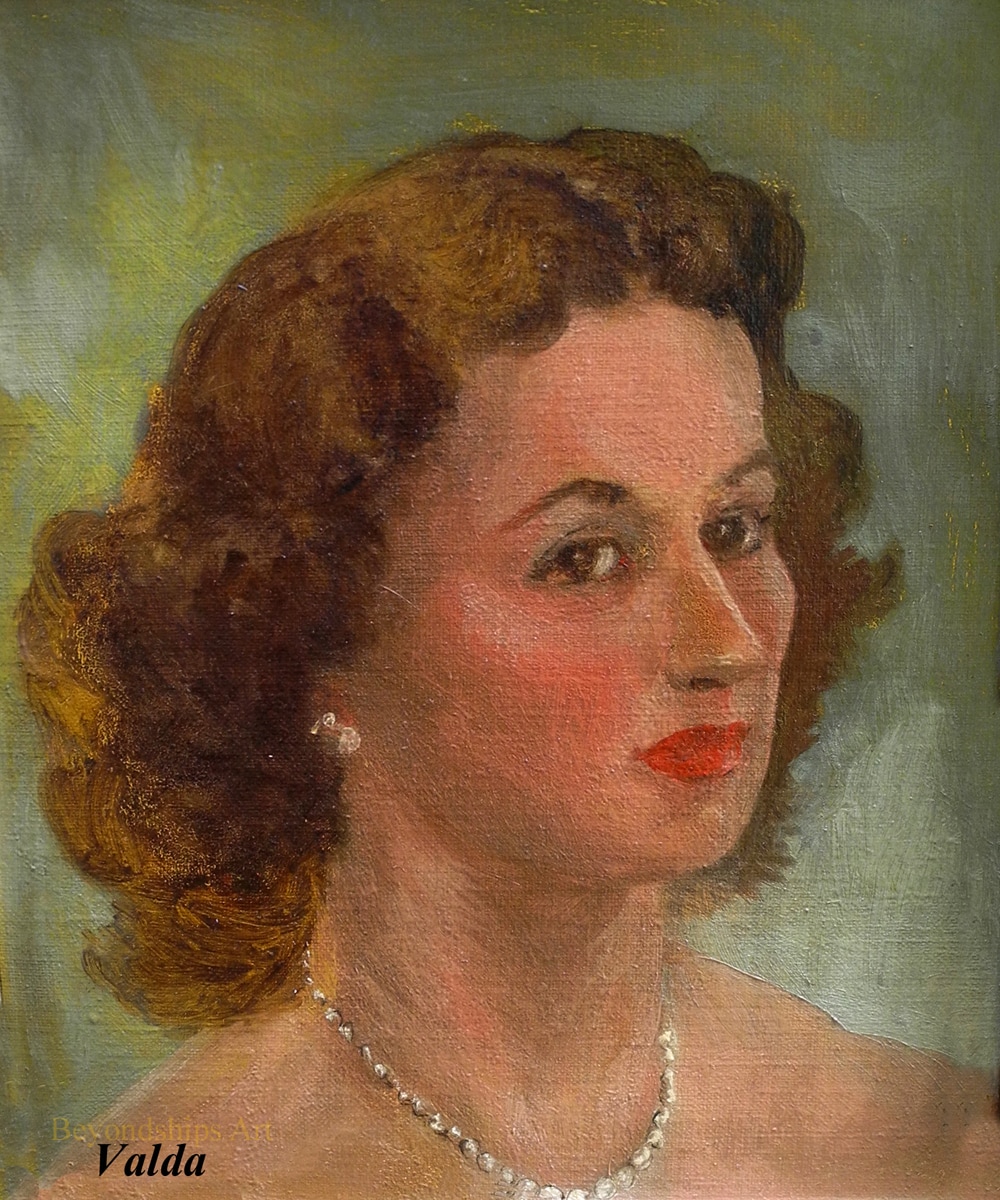COLLECTIONSFaces
(1940s - 50s) (1960s-90s) (Matisse-inspired) Early Drawings Early Portrait Paintings Figures Landscapes and scenes Abstract Art MFA Project Sports Art Other Works |
Valda Wagner, 20th century American woman artist. She worked in a variety of styles often in conflict with the art establishment. From early in her career, her works were simply signed "Valda."
Valda was born while the guns of World War I were still sounding in Europe and lived until the beginning of the 21st Century. It was a time of near constant change that transformed the world. Her art reflects that change. She graduated high school at 15 and was class valedictorian. This was an honor but also somewhat isolating as it meant that she was much younger than her classmates at Hunter College in New York. Accordingly, time spent at the University of Chattanooga in Tennessee, where she enjoyed the friendship of her southern cousins was an influential period in her life. After graduating with a BFA from Hunter, Valda took courses at the Art Students League in New York. She felt that that studying with the professional artists who taught there was much more valuable than academic courses. In particular, she was influenced by her studies with New York social realist Reginald Marsh and realist and portraitist John Koch. In addition, there was dialogue between the students, who included people such as Roy Lichtenstein and Robert Rauschenberg during this period. The League did not favor any one style of art and the diversity of its students' approaches to art fostered artistic creativity. Valda was a Life Member of the Art Students League. Although she incorporated many different styles into her work over the years, Valda began as a traditional realist painter. This often brought her into conflict with the art establishment. Abstraction had become the new religion of the art establishment. Having once been all but excluded by the art world, its proponents now ruled the galleries and academic art. With the conviction of zealots, they were intolerant of any other style. In addition, there was considerable prejudice against women artists, even for women who were abstract artists. Working outside the art establishment, Valda did portrait commissions and murals. She supplemented the income from her art with positions at the Motion Picture Association and New York’s Fashion Institute of Technology. By the early 1960s, she had become interested in teaching art. This would allow her to pursue her love art and convey that love to young people. Moreover, in those days, teaching was one of the only professions open to women. In the business world, there was the glass ceiling - - those women who did venture into business were expected to do the substantive work while receiving none of the credit. Promotion beyond administrative positions was simply not on the table for the vast majority of women. In order to teach, Valda returned to Hunter College and enrolled in the Masters program. While aspects of this program were enjoyable and edifying, it often brought her into conflict with the proponents of abstraction. Valda wanted to use whatever style that fit with her artistic vision for a particular work and not be confined to one style. This could mean using abstraction, realism, traditional Asian techniques, ancient Celtic motifs, sculpture or combinations of influences to create a work. Despite having to deal with the art establishment’s intolerance, she persevered and received her degree. During the next 25 years, she taught in schools in New York City, often in what would be termed the inner city. She developed close and rewarding relationships with many students, inspiring them not only towards art but also about style and fashion. This was also a time of great tension as New York’s financial crisis devastated the schools just as the inner city was demanding the means to join the mainstream. At the same time, Valda continued to produce works of art. Often these were inspired by events and people in the news. She sought to capture the emotions of the times. Contact with nature also inspired her whether it was in her garden or on her numerous visits to Ireland where she was captivated by the play of the light against the subtle shades of color. Throughout it all her style constantly evolved. |
